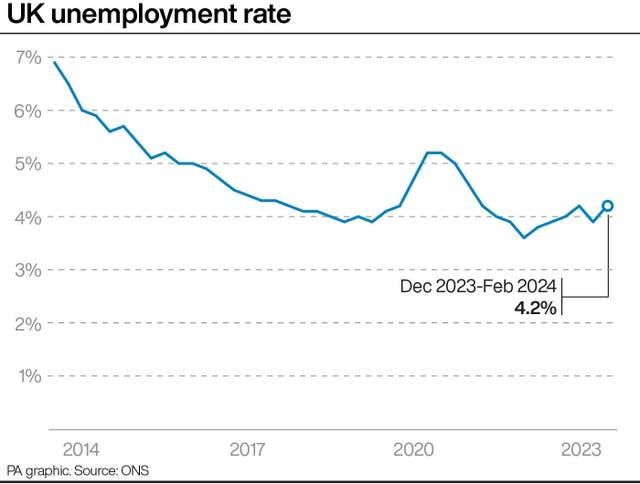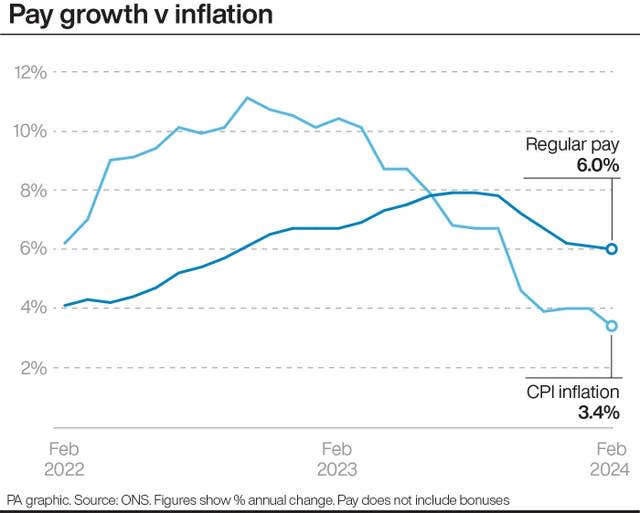Britain’s unemployment rate has risen by more than expected and earnings growth has eased back once again in the latest sign that economic uncertainty is affecting the UK jobs market.
The Office for National Statistics (ONS) said the jobless rate jumped to 4.2% in the three months to February – the highest level for nearly six months and up from 3.9% in the three months to January.
Most economists had been expecting the rate to only edge up slightly to 4% in the quarter.


The official figures also showed regular wages growth, excluding bonuses, falling back once again, to 6% in the three months to February from 6.1% in the previous three months.
Thanks to falling inflation, when taking the Consumer Prices Index (CPI) into account, real regular wages rose by 2.1%, which is the highest for almost two-and-a-half years.
But the drop in earnings growth was less than expected, with economists pencilling in a fall to 5.9%.
The Bank of England is watching wages closely in its battle to bring inflation back to its 2% target.


Liz McKeown, ONS director of economic statistics, said: “Recent trends of falling vacancy numbers and slowing earnings growth have continued this month, albeit at a reduced pace.
“At the same time, we are now seeing tentative signs that the jobs market is beginning to cool, with both a fall in the headline employment rate from our survey and a drop in the total number of people on payrolls from HMRC data.”
More timely data from HM Revenue & Customs revealed that the number of workers on payrolls fell by 67,000, or 0.2%, to 30.3 million in March.
This is the biggest drop since the quarter to November 2020 at the height of the pandemic, although the figures are estimates and subject to revision.
Vacancies likewise fell for the 21st period in a row, down 13,000 quarter on quarter to 916,000 in the first three months of 2024.
We’ve published the latest UK labour market figures.Headline indicators for the UK labour market for December 2023 to February 2024 show:
▪️ employment was 74.5%▪️ unemployment was 4.2%▪️ economic inactivity was 22.2%
➡️ https://t.co/TllNpQLjtS pic.twitter.com/rsTVAKMbfE
— Office for National Statistics (ONS) (@ONS) April 16, 2024
The data comes after the UK fell into recession at the end of last year, although it is thought this may prove short-lived, with recent output data suggesting the economy is heading for growth overall in the first quarter.
But the ONS warned that the unemployment rate data should still be treated with “caution” as it continues to overhaul its labour force survey due to low response rates, with the full revamped version not due to be introduced until September.
Acting shadow work and pensions secretary Alison McGovern took aim at the Government, saying: “Tory failure is laid bare by the reality that we are now the only country in the G7 with an employment rate stuck below pre-pandemic levels.”
Chancellor Jeremy Hunt focused on the boost to workers’ pockets from rising real wages.
He said: “It’s great that real wages have now risen for nine months in a row, and, together with our national insurance cuts worth £900 to the average worker, people should start to feel the difference.”
The figures also show there were an estimated 106,000 working days lost due to industrial action in February, with the health and social work sectors hardest hit by strikes.

